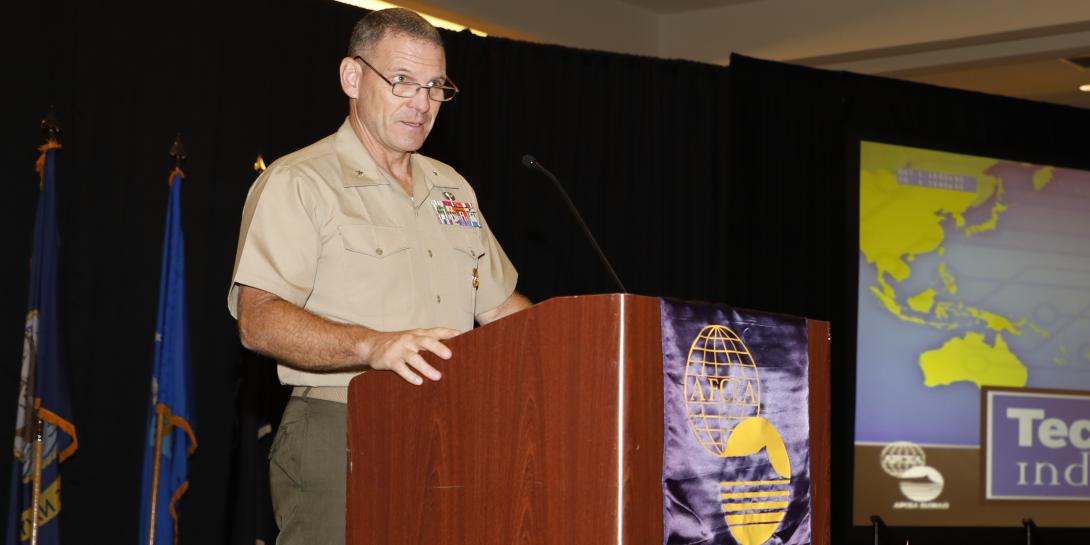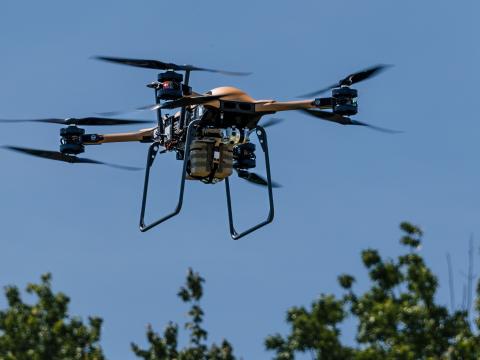Data Fuels Diverse Marine Operations
With a more diverse set of missions looming in its ongoing transformation, the U.S. Marine Corps is looking at a broad range of technologies to empower individual Marines in a host of capabilities. These can range from kinetic warfighting to sensor data management, including security operations.
Most of these new technologies will come from the commercial sector, as it is advancing the state of the art in information systems faster than government. However, military concerns will be taken into account to ensure fidelity for Corps systems.
Marine Corps modernization was the topic for the Keynote Breakfast speaker on Day 2 of TechNet Indo-Pacific, being held in Honolulu April 11-13. With its theme of “From Data to Dominance,” the event emphasized the importance of digital operations in the highly dynamic and challenging Indo-Pacific region.
Describing the form those operations might take for the Marines was Brig. Gen. Joseph R. Clearfield, USMC, deputy commander, U.S. Marine Forces Pacific. The general emphasized the defining nature of data to the Corps as it undergoes a major force transformation. Saying that today’s world is characterized by advanced sensors and systems amid growing strategic competition, the general offered his view of the digitized Marine.
“Think of a Marine today as a sensor, possibly a shooter, a receiver and a connector of data,” he offered.
Think of a Marine today as a sensor, possibly a shooter, a receiver and a connector of data.—Brig. Gen. Joseph R. Clearfield, USMC, deputy commander, U.S. Marine Forces Pacific #AFCEATechNet
— Bob Ackerman (@rkackerman) April 12, 2022
And sensing means across-the-board data, the general explained. “Standing forces could provide PNT [positioning, navigation and timing] services to overcome adversary interference,” he suggested.
Technology advances and falling costs have led to the proliferation of precision strike systems. Across the globe, adversaries are taking advantage of that, he noted. So, Marines can expect advanced enemy weaponry along with active denial efforts against digital systems. “We are likely to operate in a contested digital environment,” he stated.
ISR parity places a premium on having maritime domain awareness.—Brig. Gen. Joseph R. Clearfield, USMC, deputy commander, U.S. Marine Forces Pacific #AFCEATechNet
— Bob Ackerman (@rkackerman) April 12, 2022
Intelligence, surveillance and reconnaissance parity places a premium on having maritime domain awareness, he continued. Gen. Clearfield called for the ability to respond flexibly in an information sensor ecosystem. “The goal should not be to avoid detection but to avoid characterization. We need to be able to raise our signature or to go dark,” he declared.
We need a holistic approach to implementing material and non-material command and control capabilities.—Brig. Gen. Joseph R. Clearfield, USMC, deputy commander, U.S. Marine Forces Pacific #AFCEATechNet
— Bob Ackerman (@rkackerman) April 12, 2022
With individual Marines having the capability of adjusting digital activities across the board, “the force could be viewed as one great big giant receiver or one great big giant transmitter,” the general offered. However, even with the adoption of useful commercial technologies, the Corps must be careful not to open up any vulnerabilities. Gen. Clearfield called for jam-resistant satellite communications capabilities. And, industry cannot provide open doors for adversaries in new technologies.
“We don’t want that Marine to have cookies tracking him everywhere he goes,” the general declared.




Comments